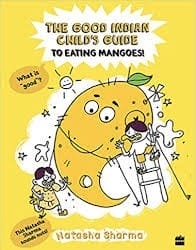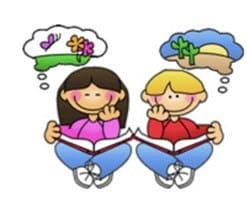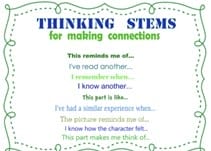When it comes to reading, the act of making connections holds great significance. As Marcus Garvey aptly stated, “A people without knowledge of their past history, origin, and culture is like a tree without roots.” Many of us grew up immersed in tales of children from distant lands who relished canned peaches, ham and bacon, plums, and gingerbread. However, I have often pondered whether we could truly relate to these stories. The ability to connect with the stories we read, be it through characters, settings, or experiences, is paramount for us as readers.
 While preparing for my lesson, one exceptional children’s picture book by the ever-brilliant Natasha Sharma captured my attention. “The Good Indian Child’s Guide to Eating Mangoes” belongs to The Good Indian Child’s Guide series and has earned the prestigious National Jarul Award. This remarkable book delves into the world of mangoes, showcasing various varieties and creative ways to savor them. It not only encourages students to indulge in mangoes but also highlights the uniqueness of each mango variety. Humor plays a central role in this book, captivating the reader’s attention. Additionally, events like the Jarul Book Award provide us with a platform to champion books penned by Indian authors, allowing us to establish connections with our reading material. We can empower our students by giving them a voice and a choice in selecting the best Indian Picture book for 2023-24 through their participation in the Jarul Book Award.
While preparing for my lesson, one exceptional children’s picture book by the ever-brilliant Natasha Sharma captured my attention. “The Good Indian Child’s Guide to Eating Mangoes” belongs to The Good Indian Child’s Guide series and has earned the prestigious National Jarul Award. This remarkable book delves into the world of mangoes, showcasing various varieties and creative ways to savor them. It not only encourages students to indulge in mangoes but also highlights the uniqueness of each mango variety. Humor plays a central role in this book, captivating the reader’s attention. Additionally, events like the Jarul Book Award provide us with a platform to champion books penned by Indian authors, allowing us to establish connections with our reading material. We can empower our students by giving them a voice and a choice in selecting the best Indian Picture book for 2023-24 through their participation in the Jarul Book Award.
Making Connections:
As educators, we consistently emphasize the importance of enhancing our students’ reading and comprehension skills. The process of developing comprehension skills demands consistent practice, and among the various reading strategies, making connections to the text has always been my personal favorite. Connecting with how a character feels, how they solve problems, and where they fit in the narrative is easily relatable.
 Readers can establish connections with a book in three distinct ways: text-to-self, text-to-text, and text-to-world connections. Elementary school children often find it effortless to make text-to-self connections, a strategy that enables them to bridge the text with their own experiences and lives. When teaching this strategy, it is advisable to provide students with writing prompts or stems to guide their thinking and assist them in articulating their connections effectively.
Readers can establish connections with a book in three distinct ways: text-to-self, text-to-text, and text-to-world connections. Elementary school children often find it effortless to make text-to-self connections, a strategy that enables them to bridge the text with their own experiences and lives. When teaching this strategy, it is advisable to provide students with writing prompts or stems to guide their thinking and assist them in articulating their connections effectively.
One of the most remarkable aspects of reading books by Indian authors is that any child growing up in India can readily relate to characters like Gopal and Malli, who savor daal, chawal, and rasam. My fondness for this strategy encouraged me to explore more works by Indian authors during my lessons. Indian students connect with the characters’ names, their places of origin, and the cuisine they enjoy.
 By aiding students in building connections, whether it is connecting to prior knowledge or relating stories to their own experiences, we engage them on a deeper level. This process enhances comprehension and fosters a love for reading and learning. Utilizing the connections strategy encourages learners and supports their lifelong pursuit of knowledge. Establishing connections nurtures a lifelong passion for literacy and the quest for knowledge, equipping students to become effective communicators, writers, and illustrators. Such stories serve as mirrors and windows for Indian children and as sliding doors for students from other cultures, offering a glimpse into Indian culture. I invite you to explore the Storybook Weaver website, which features Indian Picture Books, as well as the Getlitt eBook Collection for children.
By aiding students in building connections, whether it is connecting to prior knowledge or relating stories to their own experiences, we engage them on a deeper level. This process enhances comprehension and fosters a love for reading and learning. Utilizing the connections strategy encourages learners and supports their lifelong pursuit of knowledge. Establishing connections nurtures a lifelong passion for literacy and the quest for knowledge, equipping students to become effective communicators, writers, and illustrators. Such stories serve as mirrors and windows for Indian children and as sliding doors for students from other cultures, offering a glimpse into Indian culture. I invite you to explore the Storybook Weaver website, which features Indian Picture Books, as well as the Getlitt eBook Collection for children.
Indian Book Recommendations:
- Malli by Jeeva Raghu Raghunath
- My Mother’s Sari by Sandhya Rao
- Wheels on the Tuk Tuk by Kabir Sehgal and Surishtha Sehgal
- Veena and the Cupboard of Curiosities by Sneha Uplekar
- Lunch Friends by Srividhya Venkat
Anupa Bhonslay
PYP Teacher Librarian
Oberoi International School

